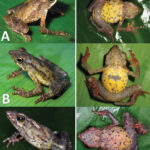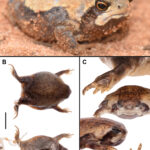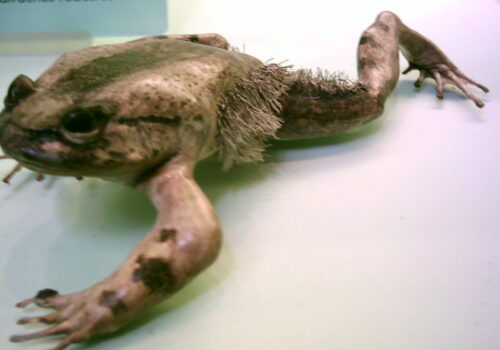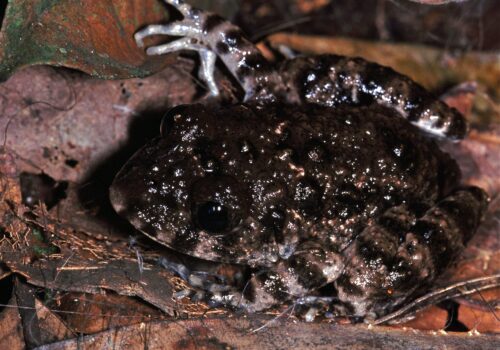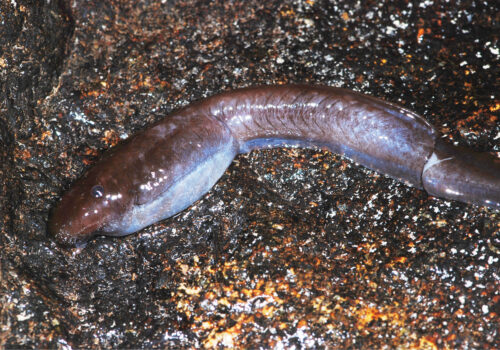- Introduction: The Enigmatic World of Arthroleptis anotis
- Taxonomy and Classification: Understanding Arthroleptis anotis
- Natural Habitat: A Secret Existence in African Rainforests
- Physical Characteristics: A Master of Camouflage
- Behavior and Life Cycle: Stealthy Predators and Silent Courting
- Ecological Role: Silent Sentinel of the Forest Ecosystem
- Threats and Conservation Status: Navigating an Uncertain Future
- Cultural and Scientific Significance: A Hidden Gem in Biodiversity
- Conclusion: A Quiet Champion Worth Protecting
Introduction: The Enigmatic World of Arthroleptis anotis#
In the emerald shade beneath tangled rainforests, silence is rarely absolute. The tropical forest floor rustles with creatures of all shapes and sizes, buzzing with insects, slithering with snakes, and crawling with myriad life forms. Yet, quietly hidden away, almost unnoticed in the leaf litter and shadows, lives a frog that is both intriguing and remarkably elusive: the Arthroleptis anotis.
Commonly known as the Silent Forest Guardian, Arthroleptis anotis belongs to the family Arthroleptidae, known to scientists as squeakers due to the soft, squeaking sounds many of their relatives produce. Ironically, however, Arthroleptis anotis itself is scarcely vocal, earning its intriguing identity among researchers as one of the quietest members of this vibrant frog lineage.
In this revealing journey, we will venture into the remote forests of Central Africa to immerse ourselves in the hidden lifestyle of an often-overlooked species, exploring its significant ecological role, unique habits, adaptations, and the conservation hurdles it faces today.
Taxonomy and Classification: Understanding Arthroleptis anotis#
To fully appreciate Arthroleptis anotis, it’s essential to understand its taxonomic heritage. Situated gracefully within the kingdom Animalia, this amphibian is classified under the phylum Chordata and class Amphibia, distinctly within the order Anura. Its family Arthroleptidae brings together a diverse group colloquially termed “squeaking frogs,” though the silent character of Arthroleptis anotis certainly makes it stand apart.
The genus Arthroleptis comprises numerous species distinguished by their reproductive adaptations and terrestrial lifestyles, typically bypassing water-dependent tadpole stages. Arthroleptis anotis itself stands as a unique representative among its genus, displaying vivid evolutionary adaptations that suit its secretive forest habitats.
Natural Habitat: A Secret Existence in African Rainforests#
Arthroleptis anotis inhabits dense and humid rainforests, predominantly confined to specific regions in Central and West Africa. Notably reported in countries like Cameroon, Equatorial Guinea, and Gabon, this elusive frog is known mainly from isolated forested localities, evading easy detection and study.
The Forest Floor: An Arboreal Wonderland#
Within its lush and verdant sanctuary, Arthroleptis anotis favors dark, moist microhabitats in the deep leaf litter of forest floors. Beneath rich canopies of towering trees, the ground is carpeted in layers of decomposing leaves, dead wood, ferns, and mosses—a paradise of nourishment and shelter for numerous small arthropods, as well as myriad frog species.
These frogs particularly thrive in areas with extensive ground litter, shaded gullies, and streamside forests. Such complex habitats serve as both hunting grounds and hiding places, allowing Arthroleptis anotis to maneuver discreetly and efficiently through the underbrush.
Physical Characteristics: A Master of Camouflage#
Arthroleptis anotis captivates researchers and nature enthusiasts alike through its subtle yet intelligent adaptations. At approximately 30-35mm in total length, it is a relatively small frog, blending seamlessly with its surroundings, possessing a stunning cryptic coloration tailored to evade predators and surprise prey alike.
The species displays a delicate mosaic of brown, gray, and olive tones, decorated gently with darker mottling or blotches across its back and limbs, a perfect mimicking of fallen leaves and shadows. Its skin texture ranges commonly from smooth to slightly granular, finely tuned to match its natural habitat’s organic materials.
Even more intriguing are the eyes of Arthroleptis anotis: large relative to its body and strategically adapted for excellent nocturnal vision, crucial for nocturnal hunting expeditions within thick forests.
Behavior and Life Cycle: Stealthy Predators and Silent Courting#
Unlike their chorus-filled amphibian cousins, the life of Arthroleptis anotis unfolds in quiet discretion. Predominantly terrestrial, these frogs carefully tread through leaf litter, hunting insects, small arthropods, and invertebrates with calculated patience. They employ a sit-and-wait strategy, blending motionlessly into their environment. Once prey is within range, a sudden, precise leap and deft flick of their sticky tongues bring silent satisfaction.
Reproduction without Water Bodies#
One exceptional characteristic of Arthroleptis anotis is its independence from standing bodies of water for reproduction, a profound evolutionary adaptation. Unlike frogs exhibiting typical tadpole metamorphosis, Arthroleptis anotis lays terrestrial eggs hidden deep within the safe confines of moist leaf litter.
The laid eggs hatch directly into miniature froglets, an adaptation known scientifically as direct development. Over weeks, these tiny froglets remain vulnerably camouflaged beneath leaves, feeding on minute insects and gradually maturing into capable adults, perfectly adapted to rainforest life.
Ecological Role: Silent Sentinel of the Forest Ecosystem#
Arthroleptis anotis serves as a gentle yet critical contributor to rainforest biodiversity. As predators on smaller invertebrates, they partake in regulating invertebrate populations, indirectly influencing decomposition rates, plant growth, and soil nutrient cycling. They also hold importance as prey species, contributing a significant food source to snakes, birds, and small mammals inhabiting these ecosystems.
Their presence (and absence) indicates subtle shifts within the delicate rainforest biome. Changes in their population can quickly signal larger disturbances affecting the stability and health of entire forest ecosystems.
Threats and Conservation Status: Navigating an Uncertain Future#
Unfortunately, like countless amphibians worldwide, Arthroleptis anotis faces a growing list of threats primarily driven by human activities and global climate changes. Habitat destruction—especially due to logging, agricultural expansion, and deforestation—poses the most significant risk, fragmenting and severely limiting their habitat range, reducing genetic diversity and overall populations.
The species currently remains assessed as Data Deficient (DD) by the International Union for Conservation of Nature (IUCN), highlighting the need for comprehensive studies to precisely quantify its population status, habitat requirements, and threats. Its scarcity, elusive behavior, and cryptic habits complicate conservation assessments; therefore, urgent field research is imperative to secure informed conservation measures and habitat protections.
Conservation Efforts and the Need for Awareness#
Conservation approaches for Arthroleptis anotis require habitat protection, effective management of forested areas, and local community engagement in conservation awareness. On-the-ground efforts by organizations conducting research, monitoring populations, and promoting sustainable land-use practices have the potential to significantly support their long-term survival and further enhance our understanding of this species.
Cultural and Scientific Significance: A Hidden Gem in Biodiversity#
While Arthroleptis anotis may not occupy a prominent place in cultural folklore, it holds immense ecological and biodiversity value. Scientifically, it represents an evolutionary masterpiece—showcasing significant adaptive evolution within amphibians and serving as a potential bio-indicator species due to its sensitivity to micro-environmental changes.
Further research involving Arthroleptis anotis could uncover vital insights into unique evolutionary adaptations, especially those related to reproductive biology and habitat specialization. Amid global amphibian declines, understanding such specialized species may significantly contribute to broader conservation strategies worldwide.
Conclusion: A Quiet Champion Worth Protecting#
In the hidden depths of Africa’s lush and whispered rainforests, Arthroleptis anotis silently pulses—a masterful example of evolutionary adaptation, ecological intricacy, and conservation urgency. Ensuring its survival necessitates recognition, detailed research, collective environmental consciousness, and strengthened commitment to preserving rainforest habitats.
For those inspired by the marvels of wildlife and committed to the celebration and conservation of biodiversity, Arthroleptis anotis shines as a poignant reminder of how much remains undiscovered and yet critically important within the tapestry of nature. Let us protect them, study them, and continue to uncover their secrets—ensuring the Silent Forest Guardian echoes gently in our conservation ambitions for generations to come.


